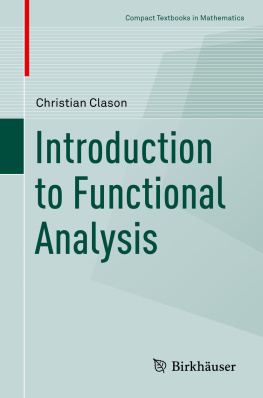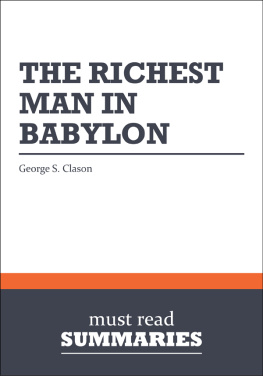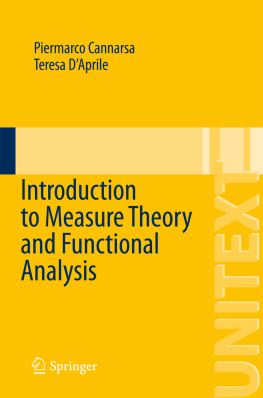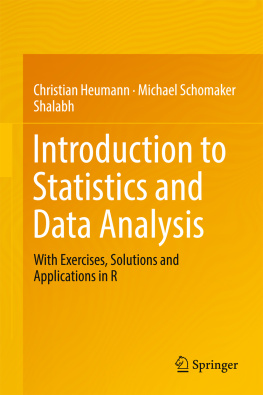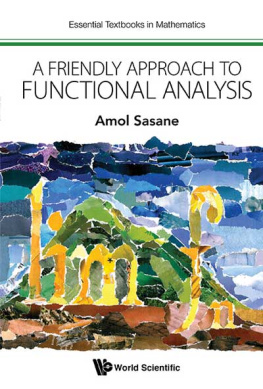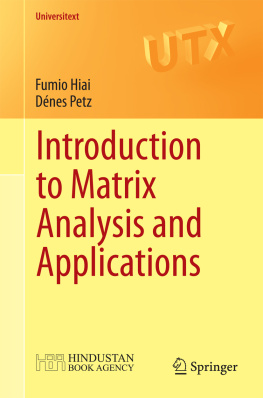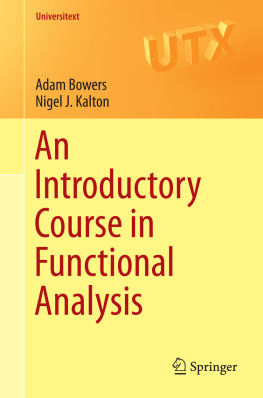Christian Clason - Introduction to Functional Analysis
Here you can read online Christian Clason - Introduction to Functional Analysis full text of the book (entire story) in english for free. Download pdf and epub, get meaning, cover and reviews about this ebook. publisher: Springer International Publishing, genre: Children. Description of the work, (preface) as well as reviews are available. Best literature library LitArk.com created for fans of good reading and offers a wide selection of genres:
Romance novel
Science fiction
Adventure
Detective
Science
History
Home and family
Prose
Art
Politics
Computer
Non-fiction
Religion
Business
Children
Humor
Choose a favorite category and find really read worthwhile books. Enjoy immersion in the world of imagination, feel the emotions of the characters or learn something new for yourself, make an fascinating discovery.
- Book:Introduction to Functional Analysis
- Author:
- Publisher:Springer International Publishing
- Genre:
- Rating:4 / 5
- Favourites:Add to favourites
- Your mark:
- 80
- 1
- 2
- 3
- 4
- 5
Introduction to Functional Analysis: summary, description and annotation
We offer to read an annotation, description, summary or preface (depends on what the author of the book "Introduction to Functional Analysis" wrote himself). If you haven't found the necessary information about the book — write in the comments, we will try to find it.
Introduction to Functional Analysis — read online for free the complete book (whole text) full work
Below is the text of the book, divided by pages. System saving the place of the last page read, allows you to conveniently read the book "Introduction to Functional Analysis" online for free, without having to search again every time where you left off. Put a bookmark, and you can go to the page where you finished reading at any time.
Font size:
Interval:
Bookmark:
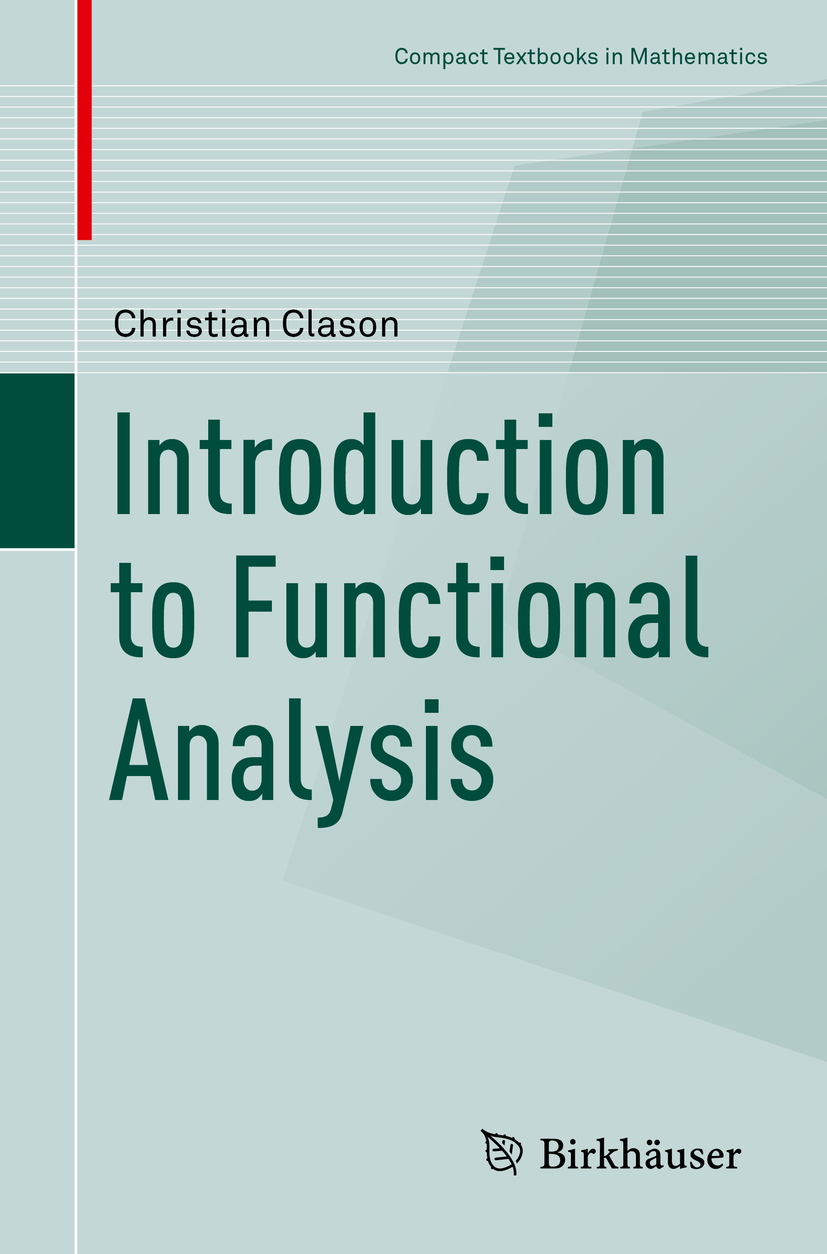
This textbook series presents concise introductions to current topics in mathematics and mainly addresses advanced undergraduates and master students. The concept is to offer small books covering subject matter equivalent to 2- or 3-hour lectures or seminars which are also suitable for self-study. The books provide students and teachers with new perspectives and novel approaches. They may feature examples and exercises to illustrate key concepts and applications of the theoretical contents. The series also includes textbooks specifically speaking to the needs of students from other disciplines such as physics, computer science, engineering, life sciences, finance.
compact:small books presenting the relevant knowledgesmall books presenting the relevant knowledge
learning made easy:examples and exercises illustrate the application of the contentsexamples and exercises illustrate the application of the contents
useful for lecturers:each title can serve as basis and guideline for a semester course/lecture/seminar of 2-3 hours per week.each title can serve as basis and guideline for a semester course/lecture/seminar of 2-3 hours per week.
More information about this series at http://www.springer.com/series/11225

This book is published under the imprint Birkhuser, www.birkhauser-science.com , by the registered company Springer Nature Switzerland AG.
The registered company address is: Gewerbestrasse 11, 6330 Cham, Switzerland
Functional analysis is the continuation of linear algebra by other means.
The development of functional analysis in the early twentieth century was motivated by the desire for general results on the solvability of differential equations. Instead of solving concrete differential equations like f+f=g for a given g by specific techniques, people wanted to know which properties of a differential equation or a right-hand side g were necessary for such a solution to exist. The crucial insight here was to consider functions as points in a vector space, on which the mapping D:ff+f defines a linear differential operator. A similar step from concrete systems of linear equations to the abstract linear equation Ax=b for a matrix A and a vector b is the basis of linear algebra. The question was then about the properties of D required for unique solvability of Df=g, in analogy to the injectivity and surjectivity of A or the absence of 0 as an eigenvalue of A. Here, the main difficulty lies in the fact that many of the fundamental results of linear algebra are based on the finite-dimensionality of the involved vector spaces (e.g., using the rank-nullity theorem). However, this is no longer the case for vector spaces of functions, and it becomes necessary to consider these algebraic concepts in combination with topological concepts such as convergence and compactness. One of the central themes of this book is to work out which algebraic, metric, topological, and geometric properties can serve as substitutes for the missing finite-dimensionality, and what role precisely these play for the individual results. The fact that this combination leads to extremely rich structures is what makes functional analysis so appealing and has led to it becoming an essential foundation for modern applied mathematics, from the theory and numerical solution of partial differential equations, through optimization and probability theory, to medical imaging and mathematical image processing.
The contents of this book correspond exactly to those of 26 lectures of 90 min each (of which not too many should fall on a public holiday) in the fourth semester of a bachelors program in mathematics; it therefore cannot and is not supposed to be a substitute for more comprehensive textbooks such as [7, 15, 22, 2931] or the more recent [3, 23] (which are closer to the aims of this book). Its aim is rather to present a concise, streamlined, and rigorous development of the essential structural results that are important in particular throughout applied mathematics and thus build a solid foundation for mathematical lectures on the above-mentioned topics. All further results (e.g., on quotient spaces or Fredholm operators) are treated only insofar as they are needed or are useful for significantly simplifying a proof. After the tight corset of a lecture had been removed, many more beautiful results could have been included; this temptation was resisted. Readers are therefore certain to miss a favorite result; a particularly conspicuous gap is details on Lebesgue and Sobolev spaces, which are left to lectures on measure and integration theory (e.g., based on [5, Chapters XII and XIII]) and on partial differential equations, respectively. (A nice treatment can also be found in [3].)
The structure of the book as well is based on the desire to draw as clear and direct a line as possible to the main results. To this end, as far as possible, related topics are treated together, and more general results are exploited that are to be proved anyway. This leads to numerous dependencies but is likely in the spirit of functional analysis as an abstract structural theory (motivated by application in other branches of mathematics). Of course, some freedom remains even under these constraints that others might have used differently, in particular for an earlier treatment of Hilbert spaces. Specifically, it is possible to cover Chap..
Font size:
Interval:
Bookmark:
Similar books «Introduction to Functional Analysis»
Look at similar books to Introduction to Functional Analysis. We have selected literature similar in name and meaning in the hope of providing readers with more options to find new, interesting, not yet read works.
Discussion, reviews of the book Introduction to Functional Analysis and just readers' own opinions. Leave your comments, write what you think about the work, its meaning or the main characters. Specify what exactly you liked and what you didn't like, and why you think so.

